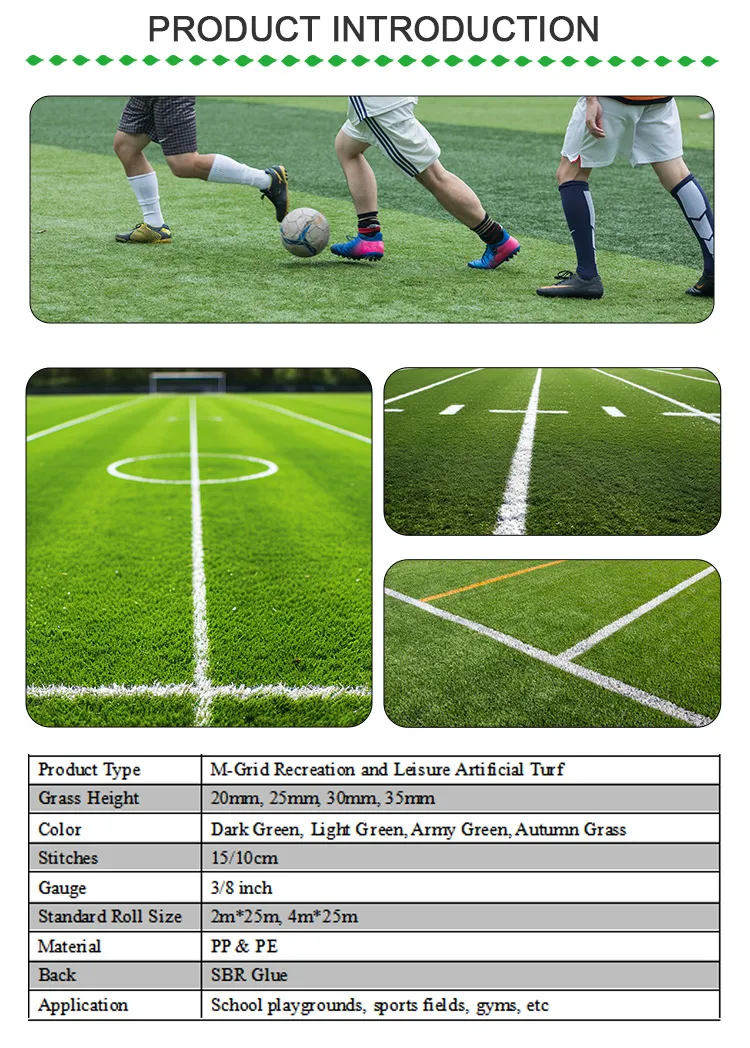
- Afrikaans
- Arabic
- Belarusian
- Bengali
- Czech
- Danish
- Dutch
- English
- Esperanto
- Estonian
- Finnish
- French
- German
- Greek
- Hindi
- Hungarian
- Icelandic
- Indonesian
- irish
- Italian
- Japanese
- kazakh
- Rwandese
- Korean
- Kyrgyz
- Lao
- Latin
- Latvian
- Malay
- Mongolian
- Myanmar
- Norwegian
- Persian
- Polish
- Portuguese
- Romanian
- Russian
- Serbian
- Spanish
- Swedish
- Tagalog
- Tajik
- Thai
- Turkish
- Turkmen
- Ukrainian
- Urdu
- Uighur
- Uzbek
- Vietnamese
cost to build artificial turf soccer field
Dec . 05, 2024 01:40 Back to list
The Cost to Build an Artificial Turf Soccer Field A Comprehensive Overview
Building an artificial turf soccer field has become an increasingly popular investment for schools, municipalities, and private clubs across the globe. The advantages of synthetic playing surfaces, such as lower maintenance costs, increased durability, and the ability to withstand various weather conditions, make them an attractive option for organizations looking to provide high-quality facilities for players of all ages. However, understanding the costs associated with constructing a turf soccer field is crucial for effective budgeting and planning. This article explores the factors influencing the cost to build an artificial turf soccer field and provides a comprehensive overview of expenditure expected in such a project.
Initial Costs
The initial costs of constructing an artificial turf soccer field can vary significantly based on several factors. Typically, the price ranges from $500,000 to $1,500,000 for a full-size field, usually measuring 100 yards by 60 yards. The primary components contributing to this cost include the turf itself, installation, supporting infrastructure, and any necessary permits or site preparation work.
1. Turf Material One of the most significant expenses in constructing an artificial turf field is the cost of the turf material, which can range from $2 to $10 per square foot, depending on the quality and type of turf chosen. Higher-quality turf may offer better durability and a more realistic feel, often appealing to organizations looking to provide the best playing experience.
2. Installation Alongside turf material, the costs of installation can be substantial, often representing 20-30% of the total project budget. Professional installation ensures that the turf is laid properly, which is crucial for the longevity of the field and player safety. Improper installation can lead to issues such as uneven surfaces, drainage problems, and premature wear.
3. Site Preparation Before any turf can be laid, the site must be adequately prepared. This process may involve grading the land, ensuring proper drainage, and installing appropriate infill materials. Depending on the condition of the site and the complexity of the drainage system required, site preparation can add upwards of $100,000 to the overall cost.
Additional Infrastructure Costs
cost to build artificial turf soccer field

Beyond the standard expenses associated with turf and installation, various infrastructure components must also be considered. These might include
- Lighting If the field requires lighting for evening games and practices, the installation of high-quality floodlights can add another $100,000 to $200,000, depending on the number of light poles and the power rating of the fixtures used.
- Fencing Safety and boundaries are essential for any soccer field. Installing around 4 to 6-foot fencing around the field can range from $10,000 to $30,000, depending on the materials used.
- Goalposts and Accessories Quality goalposts and other accessories like corner flags, benches, and storage units can also contribute to costs, adding a supply expenditure of $10,000 to $25,000.
Ongoing Maintenance and Durability
While artificial turf fields are known for requiring less maintenance than natural grass, there are still costs to consider. Routine maintenance, such as periodic cleaning, infill replacement, and inspections, can run between $5,000 and $15,000 annually. Additionally, the lifespan of artificial turf ranges from 8 to 15 years, depending on usage and quality, meaning organizations should also budget for future replacement.
Conclusion
The investment in an artificial turf soccer field can provide a multitude of benefits, including enhanced playability, lower maintenance, and increased usage hours. Understanding the cost breakdown, from initial expenses to ongoing maintenance, is essential for stakeholders aiming to make informed decisions about their facility investments. By carefully considering the various factors and costs involved, organizations can create a budget that reflects their goals and supports the surrounding community's commitment to providing excellent sporting facilities. In doing so, they not only foster an environment for athletic development but also enhance community engagement through sport.
-
The Benefits of Artificial Turf for Indoors
NewsJul.15,2025
-
How Artificial Grass Suppliers Ensure Quality Products
NewsJul.15,2025
-
Artificial Grass and Pets: A Space for Relaxation
NewsJul.08,2025
-
Balcony & Outdoor Decoration with Artificial Grass
NewsJul.08,2025
-
Best Indoor Artificial Grass for Home
NewsJul.07,2025
-
Best Pet Turf for Dogs: Safe & Durable Artificial Grass Options
NewsJul.07,2025
Products categories









